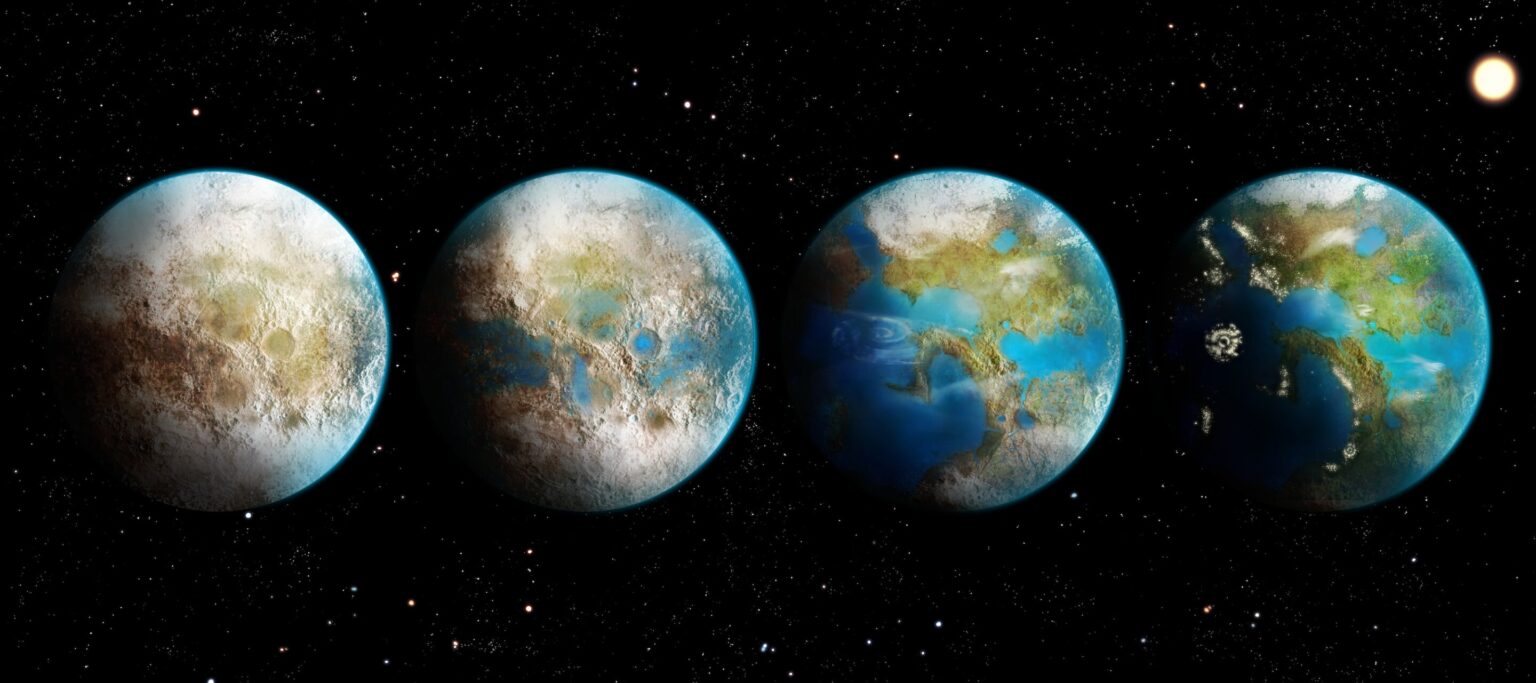Scientists from the University of Riverside believe that a reliable marker of the existence of not only life but also civilization may be the presence of certain substances. On Earth we know them as harmful greenhouse gases, but aliens may be using them to make the planet more habitable.

Artificial greenhouse gases
If aliens were changing the climate of a planet in their solar system to make it warmer, we would know about it. A new University of Riverside study reveals how man-made greenhouse gases could give away a terraformed planet.
The gases described in the study could be detected even at relatively low concentrations in the atmospheres of planets outside our Solar System with existing technology. This could be done by the James Webb Space Telescope or a future space telescope built by Europe.
And while such polluting gases should be controlled on Earth to prevent harmful effects on the climate, there are reasons why they might be intentionally used on an exoplanet.
For us, these gases are bad because we don’t want to increase warming. But they would be useful to a civilization that perhaps wanted to prevent an impending ice age or terraform an uninhabitable planet like Mars.
Since greenhouse gases are not found in nature in significant quantities, they must be manufactured somehow. Therefore, finding them would be a sign of intelligent life forms using technology. Such signs are called technosignatures.
“Technosignature” greenhouse gases
The five gases proposed by the researchers are used on Earth for industrial purposes, such as making computer chips. These include fluorinated versions of methane, ethane and propane, as well as gases composed of nitrogen and fluorine or sulfur and fluorine.
One advantage is that they are incredibly efficient greenhouse gases. For example, sulfur hexafluoride has 23,500 times more heat capacity than carbon dioxide. A relatively small amount of it could heat a freezing planet to the point where liquid water could be trapped on its surface.
Another advantage of the proposed gases, at least from the perspective of imaginary aliens, is that they are extremely long-lived and could persist in an Earth-like atmosphere for up to 50,000 years. They won’t need to be replenished too often to maintain a hospitable climate.
Also evidence of intelligent life may be chemical refrigerants such as CFCs. They are also almost exclusively man-made and are highly visible in the Earth’s atmosphere. However, CFCs may not be very beneficial because they deplete the ozone layer, unlike the fully fluorinated gases discussed in the new paper, which are chemically inert.
Finally, fluorinated gases must absorb infrared radiation to affect climate. This phenomenon produces a corresponding infrared signature that can be detected by space telescopes. With existing or planned technologies, scientists could detect these chemicals in some neighboring exoplanet systems.
Terraformed planet modeling
To get to all these calculations, the researchers modeled the planet in the TRAPPIST-1 system, located about 40 light-years away from Earth. They chose this system, which contains seven known rocky planets, because it is one of the most studied planetary systems besides our own. It is also a viable target for exploration by existing space telescopes.
The team also considered the ability of the European LIFE mission to detect fluorinated gases. This program will be able to take direct images of planets using infrared light, allowing it to detect more exoplanets than the James Webb telescope, which observes planets as they pass in front of their stars.
This work was done in collaboration with Daniel Angerhausen of the Swiss Federal Institute of Technology/PlanetS, as well as researchers from NASA’s Goddard Space Flight Center, the Blue Marble Space Science Institute and the University of Paris.
While the researchers cannot quantify the probability of detecting these gases in the near future, they are confident that they may well be detected during planned missions to study planetary atmospheres.
According to phys.org


